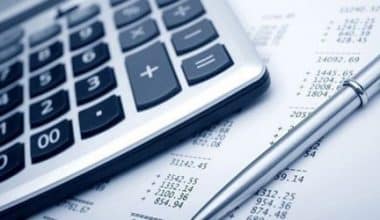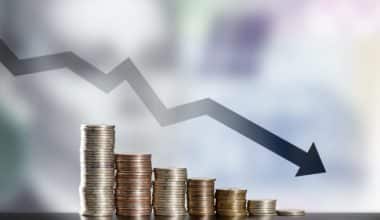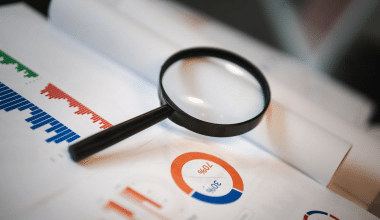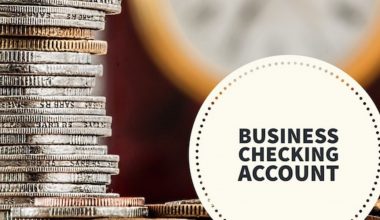Companies must have a thorough understanding of their profitability to succeed. They must calculate several aspects of their accounts to accomplish this. One of these is the total cost, which is determined using the total cost formula, which calls for the entry of numerous metrics to determine a particular amount. You can use this number to calculate the company’s profitability. The purchase price of an asset plus the operating expenses is the total cost of ownership (TCO).
We’ll look at the total cost formula’s definition, operation, benefits, and drawbacks in this article.
Total Cost
To put it simply, this is the sum of all the costs that relate to creating, keeping up, or owning something. The sum of all the costs relating to the production process, which range widely, is the total cost of production. Production managers need to be proficient in cost calculations to understand what they can and cannot afford.
Fixed costs make up the first part of the total cost. An amount that never changes in value is known as a fixed cost. Businesses also use the term “overhead costs” to describe fixed costs in the production context. In a particular economic situation, all fixed costs are added together to create the total fixed cost formula.
Fixed costs are constant regardless of the number of units produced. These costs include recurring monthly costs like rent, insurance, payroll taxes, office supplies, and employee salaries.
Additionally, variable costs are simple to forget when figuring out total costs. But obtaining an accurate total cost estimate requires careful consideration of variable costs. Costs that vary over time are variable.
The concept of variable costs, which vary depending on how much electricity a household uses, is one that people who pay water and electricity bills are likely familiar with. There are many variable costs involved in production. Depending on the number of workers, the cost of labor as well as costs associated with unforeseen events may vary. The formula for total variable costs adds up all of the costs that are subject to change.
Costs that change according to the number of goods a business produces or customers who need the service are “variable costs.” They might also change in response to outside factors like rising material costs or higher winter heating costs.
Advantages of Total Cost Formula
Additionally, businesses use their total cost calculations to assess their effectiveness and pinpoint areas where they can cut costs to reduce both their variable and fixed costs. This cost can help with pricing decisions and marketing tactics.
Setting sales and marketing goals is easier by knowing how many of each item a business must sell to turn a profit. To improve profitability, businesses can drop or redesign underperforming lines using this cost as a guide.
The primary benefit of employing the total cost formula is that it provides a precise and simple metric that a business can measure and track to evaluate a company’s profitability. To ascertain whether it is necessary to review pricing or increase sales to boost profits, businesses can compare it over time.
A useful benchmarking tool for assessing a company’s performance and figuring out where it stands in the market relative to rivals is keeping track of the cost of each product line. If a company discovers that its total cost per product is less than a rival’s consumer price, it can examine its processes to find ways to reduce the total cost to maintain a unit price that the market will accept.
A business can use this cost internally to monitor profitability and can also provide a general picture of how a particular product line or range is performing. As external suppliers’ margins are transparent, this can be helpful when negotiating with them or outsourcing production-related tasks.
Disadvantages of the Total Cost Formula
Calculating this cost can be very difficult for companies that offer a variety of goods and services. It is harder to allocate the costs efficiently to determine the total when there are more costs to consider.
Another level of complexity is the fixed cost’s derivation from a formula that calls for figuring out the variable costs. The variable cost portion of the total cost formula changes frequently in a business where the cost of supplies varies constantly or where the seasons affect prices.
The use as a forecasting tool relies on predictable changes in the prices of each process component, but the prices of materials and utilities can change in unpredictably unpredictable ways. Additionally, this means that pricing plans based on total costs rely on the ability to adjust prices frequently, which is not always feasible for businesses that can’t implement a dynamic pricing structure.
The Formula of the Total Cost
You can calculate the total cost (TC) using a straightforward formula that accounts for both total fixed cost (TFC) and total variable cost (TVC). The formula is:
TC = TFC + TVC
The Total Cost of Ownership
The total cost of ownership (TCO) includes both the initial purchase price and ongoing operating expenses for a given item during its useful life. It’s important to consider all operating costs associated with an asset, not just the initial purchase price when making decisions.
The term “total cost of ownership” (TCO) describes the overall cost of purchasing an asset. To put it simply, it is the sum of the financial costs that relate to an asset, ranging from the planning stage of its acquisition to its eventual disposal. The operational expense covers upkeep, implementation, implementation, training necessary to use the asset, disposal, licensing, and upgrades.
Consider the current value of the money as well as the timing of the costs when adjusting future costs to reflect today’s value when figuring out operating costs. Furthermore, when an asset reaches the end of its useful life, you should deduct the salvage value.
When comparing potential capital investment options to determine which offers the best value, the TCO calculation is crucial.
You calculate the cost of ownership by adding the initial purchase price to all unforeseen expenses and deducting any potential residual or resale value at the conclusion.
Calculate the Total Cost of the Mortgage
The cost of obtaining a mortgage includes many different expenses in addition to principal and interest. Real estate taxes are another obligation you’ll have, and they can differ greatly between states and regions even within one.
The taxes are calculated based on the assessed value of your property and the local government’s chosen tax rate. The cost of homeowners” insurance is another factor. Your lender will require it as a means of safeguarding its investment, and you should also have it to safeguard your equity. Additionally, you might be required to purchase separate flood insurance.
The four costs principal, interest, taxes, and insurance—are commonly abbreviated as PITI.
Principal of the Loan: The sum borrowed. This is the total that you must pay back throughout the loan, plus interest.
Interest is the portion of the principal that you pay to borrow money. It constitutes the bulk of the APR and is largely based on your creditworthiness and the current cost of borrowing in the market.
Points (prepaid interest): The prepayment of interest at the closing. A point represents 1% of the loan balance.
Charges: Charges are part of application fees, loan origination fees, and other upfront expenses levied by the lender.
Term (Length of the Loan): The monthly payments are lower but the total amount you’ll pay is higher the longer the term.
Rate: In the long run, a lower interest rate will have a greater influence on total expense.
Any one of these variables will raise the total cost, but a higher interest rate and a longer term will have the biggest impact.
How to Find the Total Cost
To ensure that one can afford all potential costs in a given circumstance, it is crucial to understand how to calculate the total cost. To determine an enterprise’s total costs, use the steps below as a guide:
- Determine all fixed expenses. Consider all potential expenses thoroughly. Calculate the full fixed cost, the sum of all fixed costs. You should keep in mind that even fixed costs are frequently transient and subject to change.
- Determine each variable cost. These expenses might only be necessary at particular times of the year or during particular stages of an economic process. Ascertain the maximum and minimum costs for each variable expense, then add them to get the overall variable cost.
- Add the total fixed cost and the total variable cost.
What Is the Total Cost Formula?
The total cost of a company or production is equal to the sum of the fixed cost (FC) and the variable cost (VC), or TC = FC + VC.
What Is the Expression for Total Cost?
You can express total cost by the equation TC = FC + VC, which stands for fixed cost plus variable cost.
What Is a Business’s Total Cost?
You add up fixed and variable costs together to form the total cost. Typically, companies multiply this number by the actual number of goods produced after calculating it per sales unit. Additionally, it represents the total expense a company incurs to produce a specific volume of output.
What Are the Actual Cost and Total Cost?
The actual cost is the overall amount that a business spends making the product. Actual cost includes all costs that relate to materials, direct labor, and overhead that a business incurs during production or that relates to purchasing an asset, whereas total cost refers to all costs associated with producing a particular type of output. or the total expense incurred by a company to produce a specific level of output.
How do you calculate, for example?
The manufacturing company’s accountant adds up the variable and fixed costs and comes up with $197,000 and $344,000 respectively. They ascertain that the business spent $541,000 overall
Conclusion
A company’s pricing strategy depends heavily on knowing the full cost of production. The overall cost also increases as fixed or variable costs do. To ensure that their businesses are operating smoothly, business owners should have information about revenues and costs. Entrepreneurs can determine their company’s profitability and performance by looking at the total cost.
Expenses for purchasing goods, shipping them in packaging, and the materials required for production are examples of variable costs. In addition, it covers the cost of labor for employees who directly take part in providing the service or the good as well as the utilities that businesses use in the production or work area.
Related Articles
- FIXED COST: Meaning, Examples, Formula, & How to Calculate
- WHAT IS CONTRIBUTION MARGIN?: Formula and Calculations
- BREAK EVEN POINT: Meaning, Example & Calculation
- BUSINESS SALES: What It Is, B2B & What You Need to Know
- COMMISSION PLAN: Sales Template & 2023 Best Practices
- Total Cost Formula: Ultimate Guide on How to Calculate the Total & Average Loan Cost






